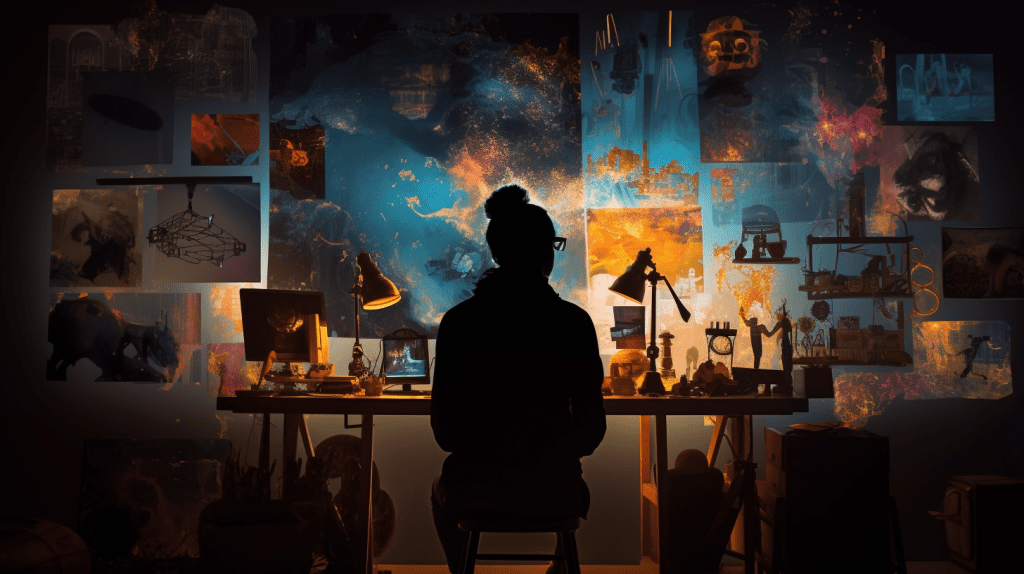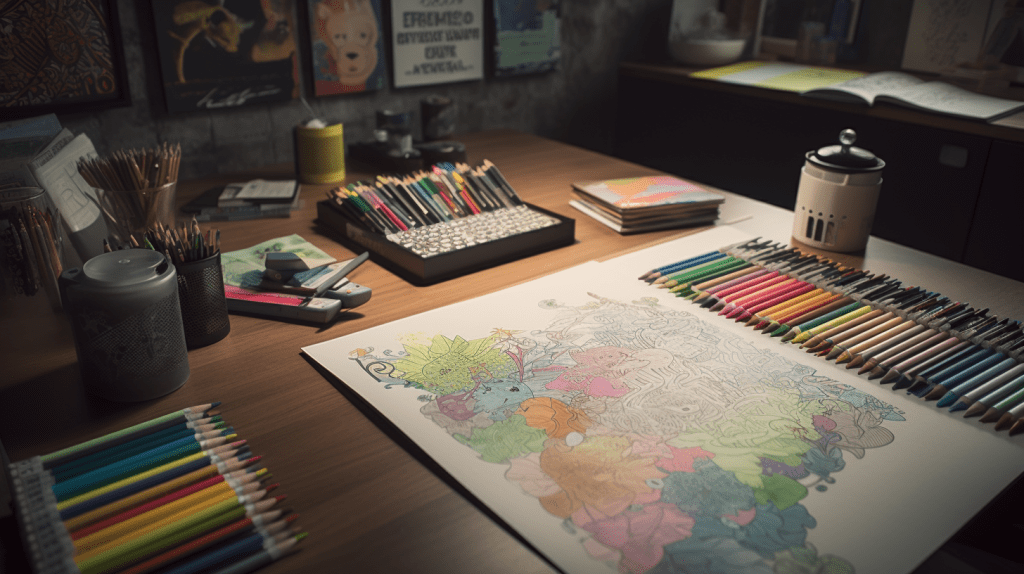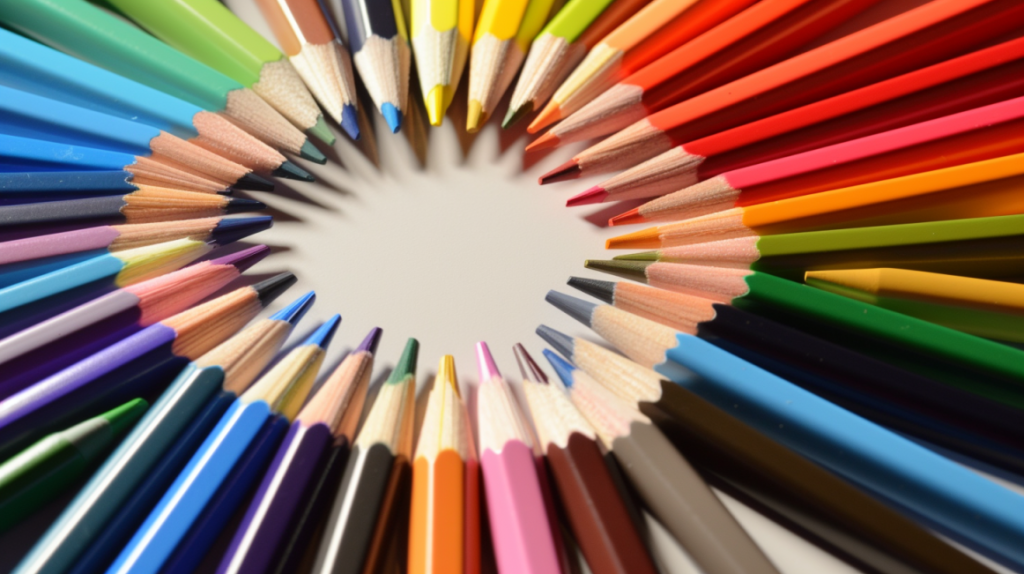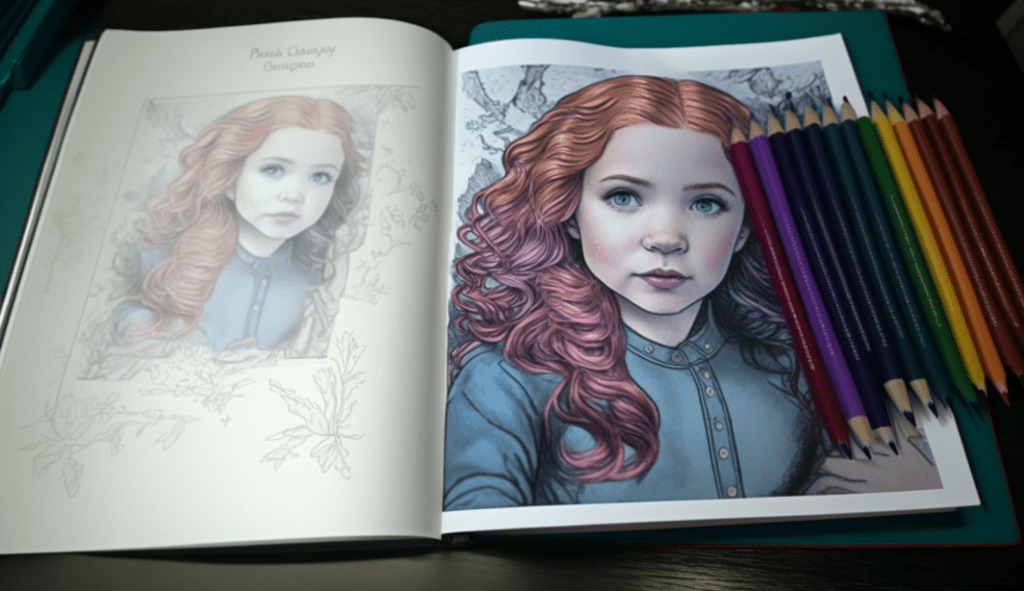Creativity is a fascinating aspect of human cognition that allows us to explore new ideas, solve problems, and express ourselves in unique ways. It plays a crucial role in various aspects of life, from artistic endeavors to problem-solving in professional settings. While creativity can be innate, it is also a skill that can be nurtured and developed. One surprising tool that has gained popularity in recent years for boosting creativity is coloring. In this article, we will delve into the relationship between coloring and creativity, explore its benefits, and discover how to incorporate coloring into our daily routines to enhance our creative potential.

Understanding Creativity
Before we delve into the connection between coloring and creativity, let’s establish a common understanding of what creativity is. Creativity is the ability to generate new and valuable ideas, concepts, or solutions through the process of imagination and original thinking. It involves breaking free from conventional patterns and exploring novel possibilities. Creativity is not limited to artistic fields; it can be applied to problem-solving, innovation, and personal growth.
The Relationship Between Coloring and Creativity
Coloring, often associated with childhood pastimes, has gained popularity among adults in recent years. The surge in popularity can be attributed to its therapeutic benefits and its ability to engage the mind in a focused and meditative state. Coloring has been embraced as a form of mindfulness practice, offering a way to relax and unwind while nurturing creativity.
Therapeutic Benefits of Coloring
Coloring has been found to have numerous therapeutic benefits. Engaging in coloring activities can help reduce stress and anxiety levels, similar to other mindfulness practices. The repetitive and rhythmic motions of coloring can induce a state of calmness, allowing the mind to relax and focus on the present moment. This state of relaxation opens up space for creative ideas to flow naturally.
Coloring as a Form of Mindfulness Practice
Mindfulness is the practice of bringing one’s attention to the present moment without judgment. Coloring serves as a medium for mindfulness practice, as it requires concentration and focus on the task at hand. By immersing oneself in coloring, the mind becomes fully engaged in the act, temporarily freeing it from distractions and promoting a sense of flow. This heightened state of focus can enhance creativity by enabling individuals to explore their thoughts and ideas more deeply.
Boosting Creativity through Coloring
The act of coloring can provide a boost to creativity by activating specific cognitive processes and engaging the right brain hemisphere, which is associated with creative thinking. Here are some ways in which coloring can stimulate creativity:
Engaging the Right Brain Hemisphere
Coloring activates the right brain hemisphere, known for its involvement in visual and spatial processing, intuition, and creativity. By stimulating this part of the brain, coloring encourages holistic and non-linear thinking, enabling individuals to think outside the box and make novel connections. This engagement of the right brain hemisphere enhances creative problem-solving abilities.
Stimulating Imagination and Original Thinking
Coloring offers a platform for imaginative exploration. The blank canvas of a coloring page invites individuals to envision possibilities and make choices regarding colors, patterns, and shading. Through this process, coloring stimulates the imagination and encourages original thinking. It allows individuals to break away from predefined structures and create unique visual representations.
Incorporating Coloring into Daily Routine
Now that we understand the relationship between coloring and creativity, let’s explore how we can incorporate coloring into our daily routines to tap into our creative potential. Here are some practical suggestions:
Finding Time for Coloring
Carve out dedicated time for coloring in your daily schedule. It could be a few minutes in the morning or evening, during lunch breaks, or before bedtime. Consistency is key; even short coloring sessions can have a cumulative effect on your creative abilities.
Creating a Dedicated Coloring Space
Designate a specific area in your home or workspace for coloring. Set up a comfortable and inspiring space with coloring supplies readily available. Having a designated space creates a sense of intention and signals to your brain that it’s time for focused creativity.
Exploring Different Coloring Techniques
Coloring provides a wide range of techniques to explore, allowing individuals to experiment and discover their preferences. Here are some aspects to consider:
Using Different Mediums and Tools
Try various coloring mediums such as colored pencils, markers, or watercolors. Each medium offers different textures, blending capabilities, and effects. Experimenting with different tools can unlock new creative possibilities and keep the process fresh and exciting.
Experimenting with Colors and Patterns
Play with color combinations, shades, and patterns. Don’t be afraid to go beyond traditional color schemes. Mixing unexpected colors and experimenting with intricate patterns can spark imaginative thinking and inspire new ideas.
Enhancing Problem-Solving Skills with Coloring
Coloring can also enhance problem-solving skills by fostering divergent thinking and cultivating a growth mindset. Here’s how:
Developing Divergent Thinking
Divergent thinking is the ability to generate multiple ideas or solutions to a problem. Coloring stimulates divergent thinking by encouraging individuals to explore various color choices, patterns, and interpretations. This process trains the mind to think flexibly and consider alternative perspectives, leading to more creative problem-solving approaches.
Fostering a Growth Mindset
A growth mindset is the belief that abilities and intelligence can be developed through dedication and hard work. Coloring provides an opportunity to embrace challenges and persist in the face of difficulties. The process of coloring intricate designs or tackling complex patterns fosters a growth mindset by encouraging individuals to break down tasks into manageable steps and see mistakes as opportunities for learning and improvement.
Coloring for Stress Relief and Relaxation
In addition to its creative benefits, coloring is also an effective tool for stress relief and relaxation. Here’s how it can help:
The Calming Effect of Coloring
The repetitive and rhythmic motions of coloring can induce a state of relaxation and reduce stress levels. Coloring allows the mind to focus on the present moment, diverting attention from worries and daily stressors. This meditative quality of coloring promotes a sense of calmness and tranquility, creating an optimal mental state for creative thinking.
Reducing Stress and Anxiety Levels
Engaging in coloring can provide a temporary escape from the demands of everyday life. It offers a mindful activity that promotes a sense of control and agency. As stress and anxiety levels decrease, mental clarity and creativity increase.
Coloring as a Tool for Self-Expression
Coloring can serve as a powerful tool for self-expression and self-discovery. Here’s how it can be used:
Tapping into Emotions and Inner Thoughts
Coloring can tap into emotions and help individuals express their inner thoughts visually. The choice of colors and the way they are applied can reflect one’s current mood, feelings, or personal experiences. Exploring these emotions through coloring can provide a cathartic outlet and facilitate self-awareness.
Creating Personal and Meaningful Artwork
Coloring offers a space for personal interpretation and individual expression. It allows individuals to create artwork that is unique to their experiences and preferences. Whether it’s coloring intricate mandalas, nature scenes, or abstract patterns, the process of creating personal and meaningful artwork can boost confidence and further unleash creativity in other areas of life.
Unleashing Creativity Beyond Coloring
While coloring itself can be a powerful tool for boosting creativity, its impact can extend beyond the act of coloring. Here’s how to leverage the benefits of coloring in other aspects of life:
Applying Creative Thinking in Other Areas of Life
The skills and mindset cultivated through coloring can be applied to various domains. The ability to think creatively, embrace challenges, and explore different possibilities can enhance problem-solving skills, innovative thinking, and overall creativity in professional and personal pursuits.
Finding Inspiration from Coloring Experiences
The insights gained from coloring experiences can inspire new ideas and perspectives. Pay attention to the patterns, colors, and combinations that resonate with you during coloring sessions. These inspirations can serve as a wellspring of creativity, sparking innovative thoughts and approaches in different contexts.
Conclusion
Coloring, once perceived as a simple childhood activity, has emerged as a powerful tool for boosting creativity in adults. Through its therapeutic benefits, engagement of the right brain hemisphere, and its ability to promote mindfulness, coloring has the potential to unlock our creative potential. By incorporating coloring into our daily routines, exploring different techniques, and leveraging its benefits for problem-solving, stress relief, and self-expression, we can enhance our creative abilities and approach various aspects of life with a fresh perspective.
FAQs about Using Coloring to Boost Creativity
What are the benefits of coloring for mental health?
Coloring has been shown to have numerous benefits for mental health, such as reducing stress and anxiety, improving focus and concentration, and promoting relaxation and mindfulness.
What is the relationship between coloring and creativity?
Coloring can stimulate creativity by engaging the right brain hemisphere, encouraging imaginative thinking, and fostering problem-solving skills. It provides a platform for self-expression and original thinking.
Can coloring be used as a tool for self-discovery?
Yes, coloring can serve as a tool for self-expression and self-discovery. It allows individuals to tap into their emotions, create personal artwork, and explore their inner thoughts visually.
How can coloring enhance problem-solving skills?
Coloring enhances problem-solving skills by fostering divergent thinking, encouraging the exploration of multiple ideas or solutions, and promoting a growth mindset. It trains the mind to think flexibly and approach challenges creatively.
Can coloring help reduce stress and anxiety?
Yes, coloring has a calming effect and can help reduce stress and anxiety levels. It promotes a state of relaxation, diverts attention from worries, and creates a sense of control and focus.
Is coloring beneficial for adults as well as children?
Absolutely! Coloring has therapeutic benefits for individuals of all ages. It can be a valuable tool for adults to relax, unleash creativity, and engage in mindful self-care.






